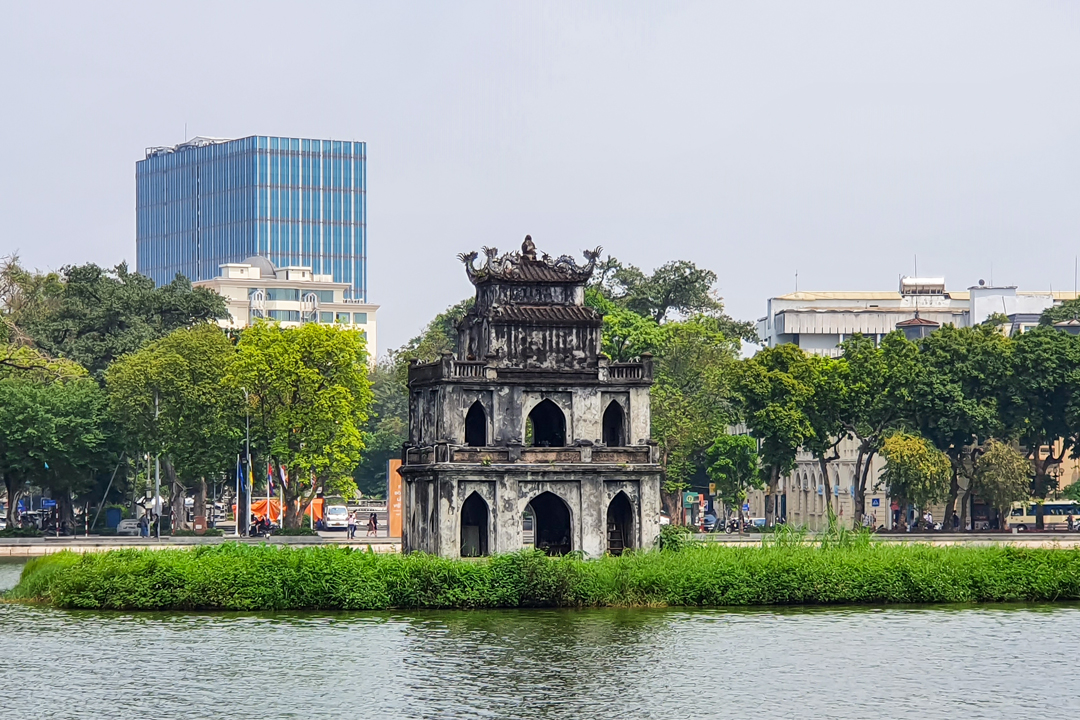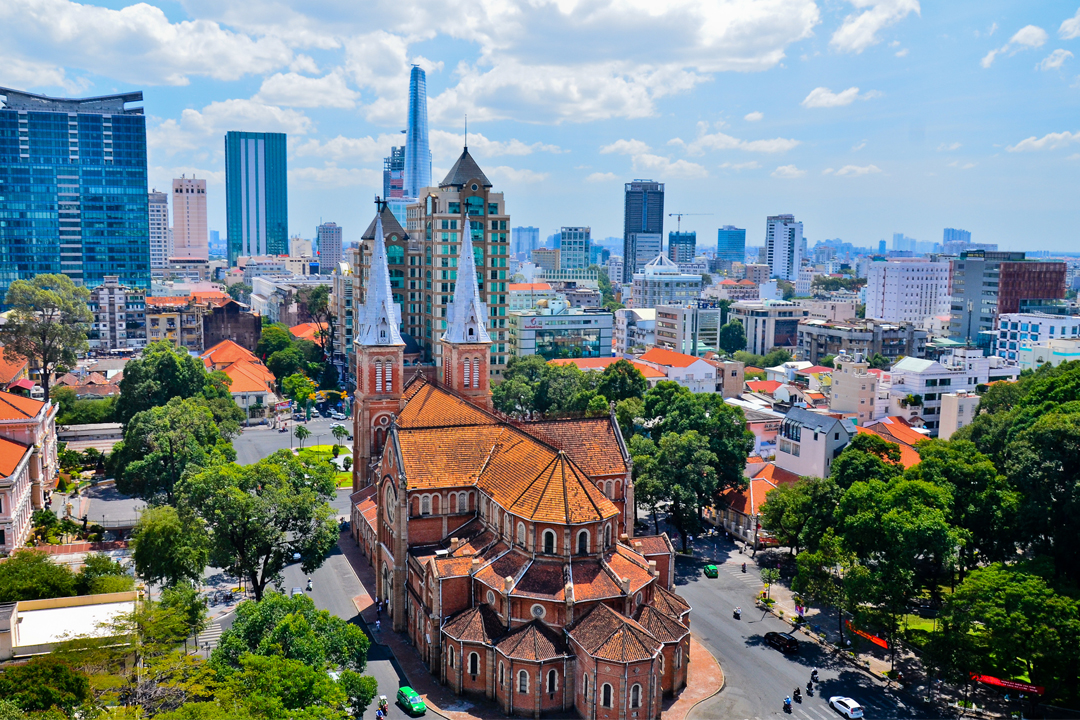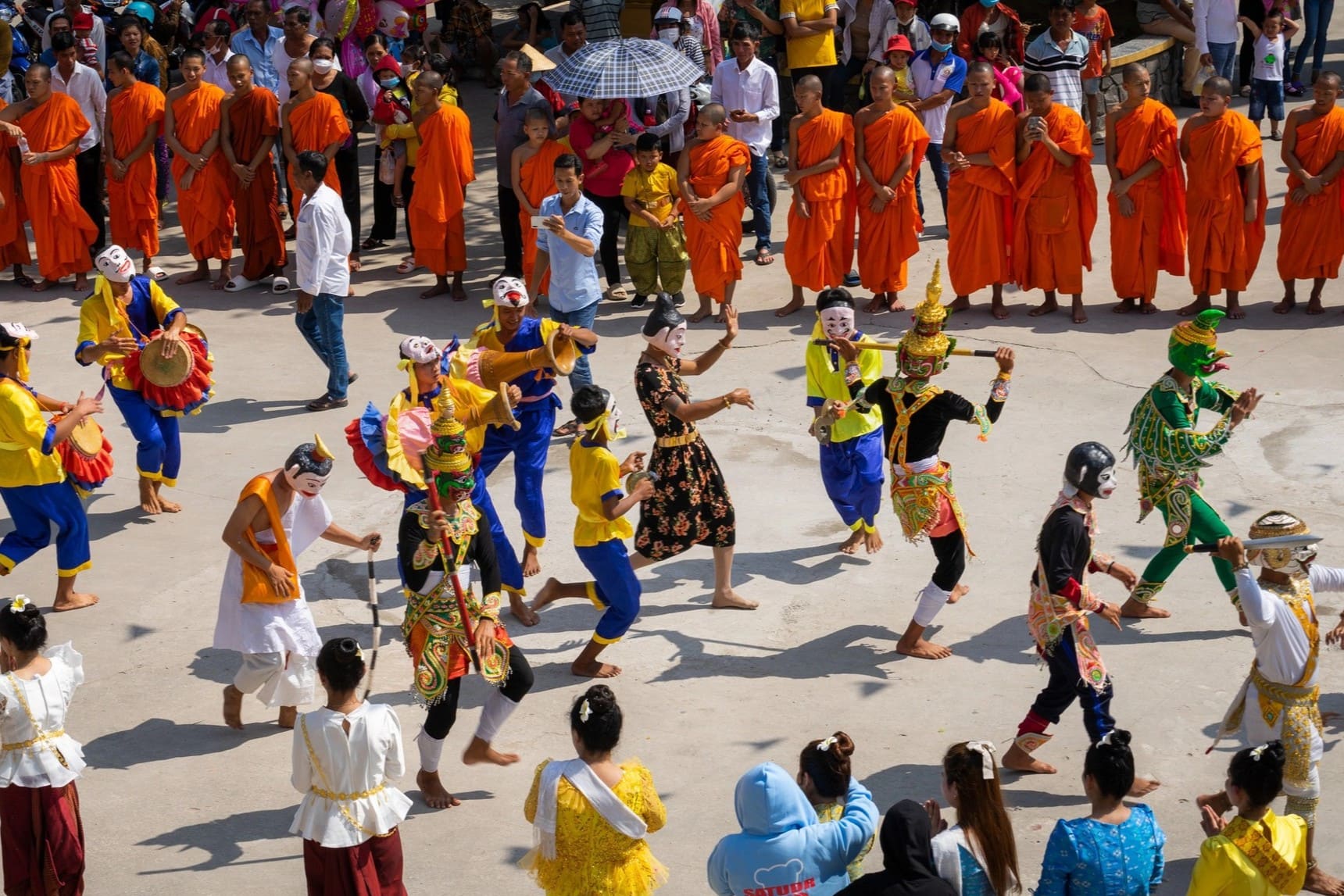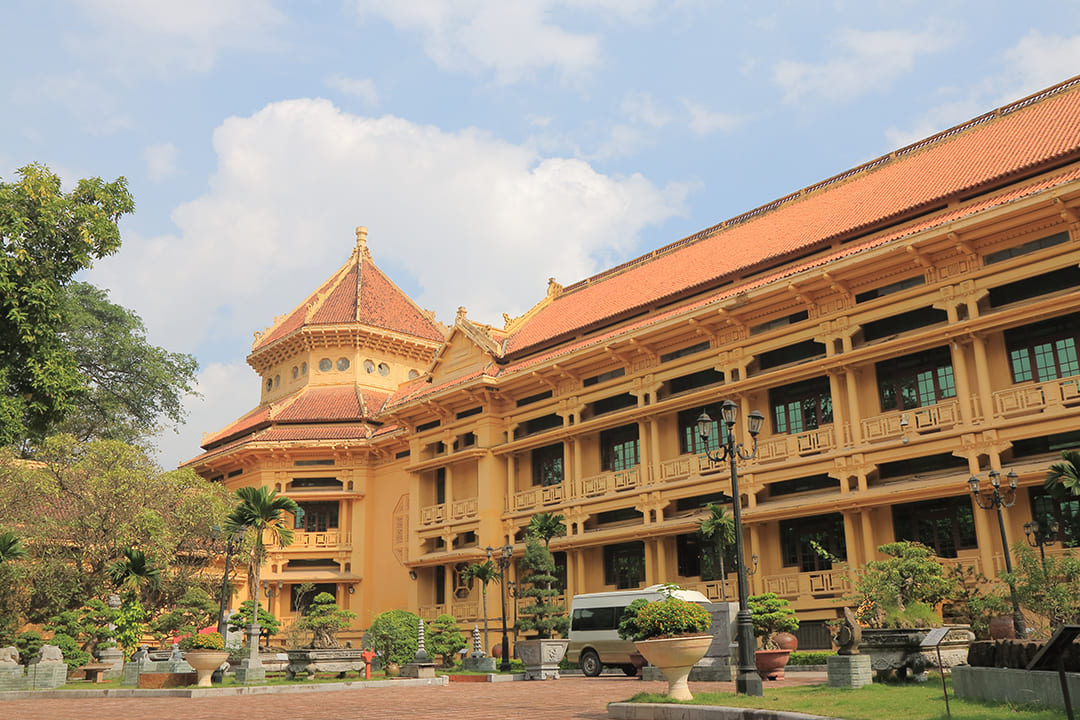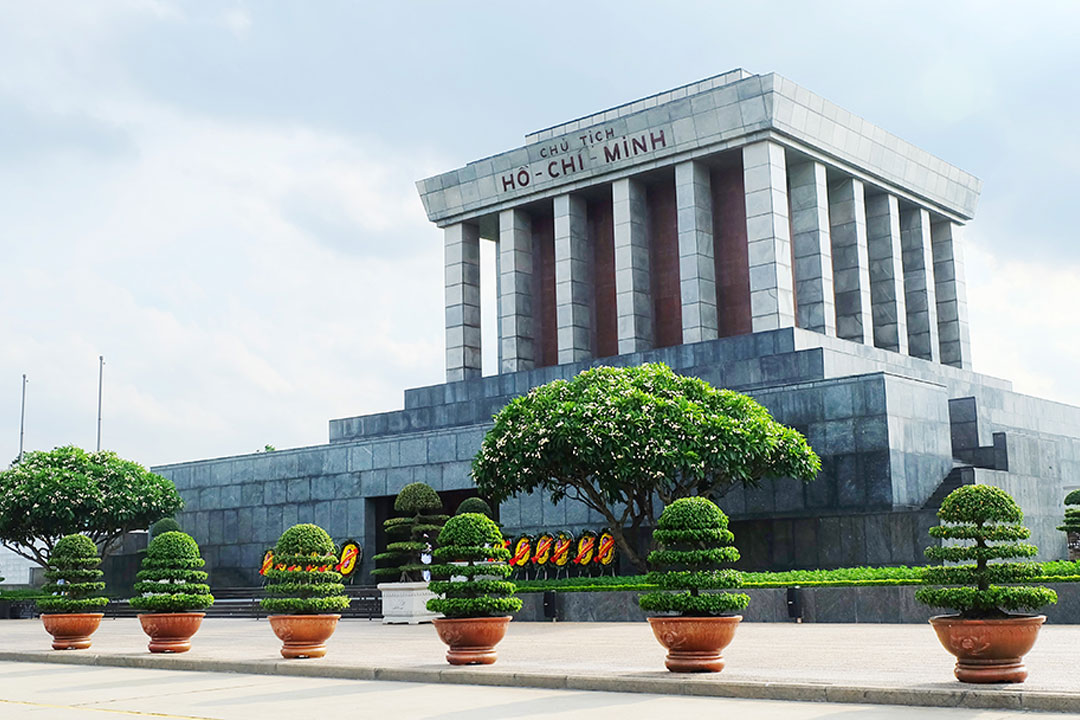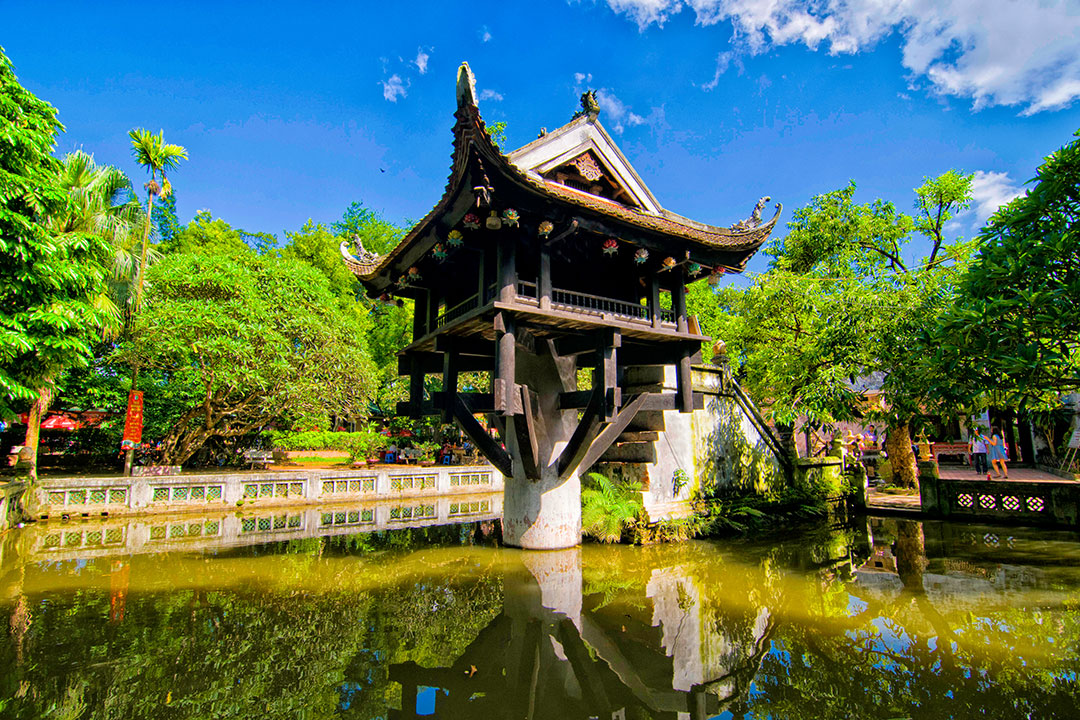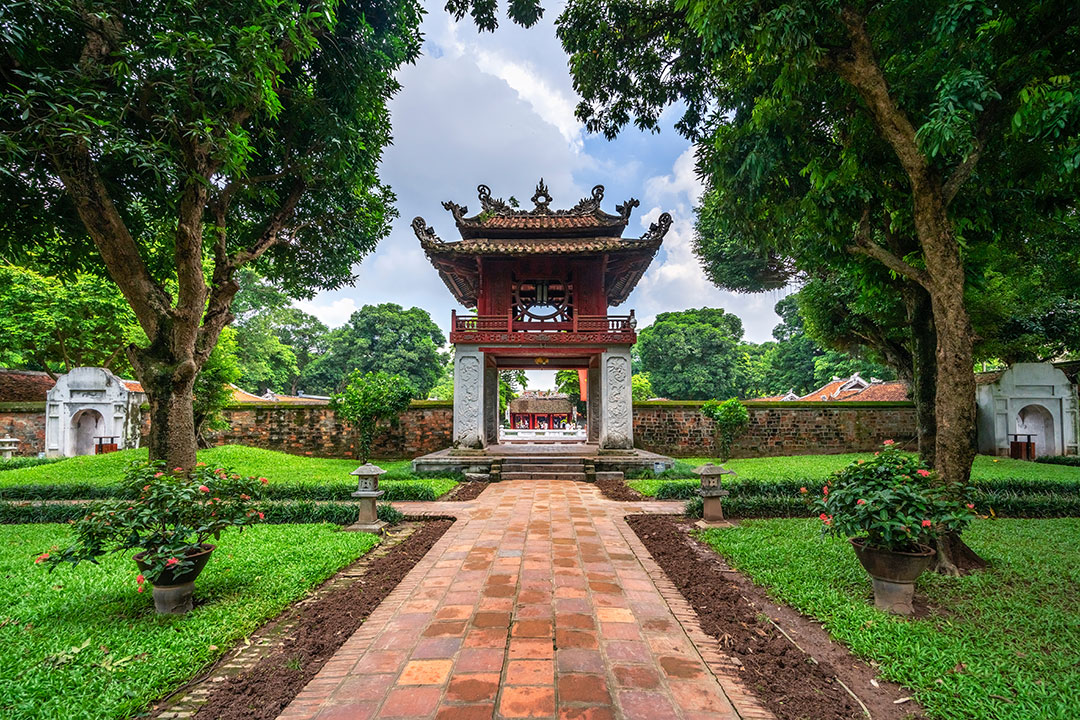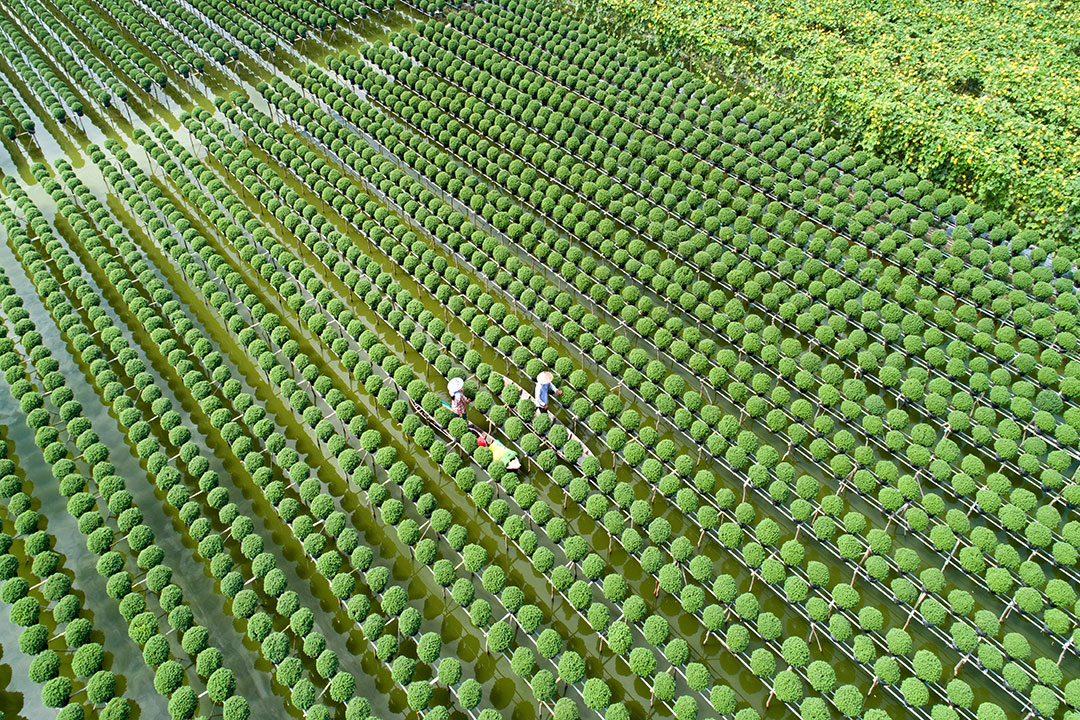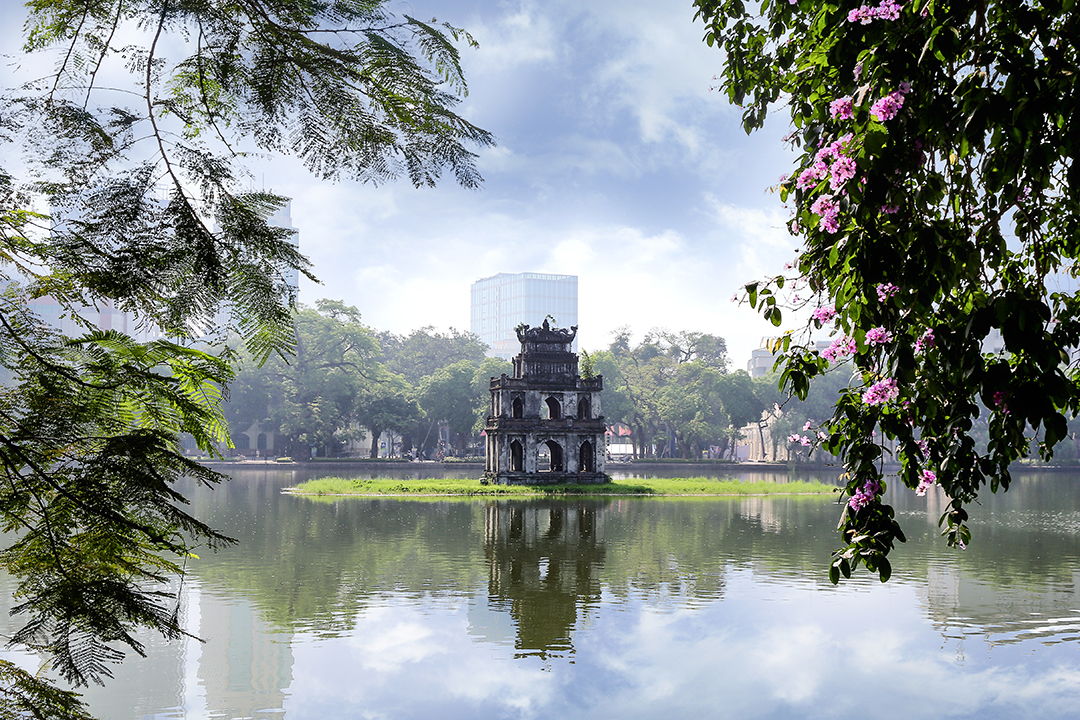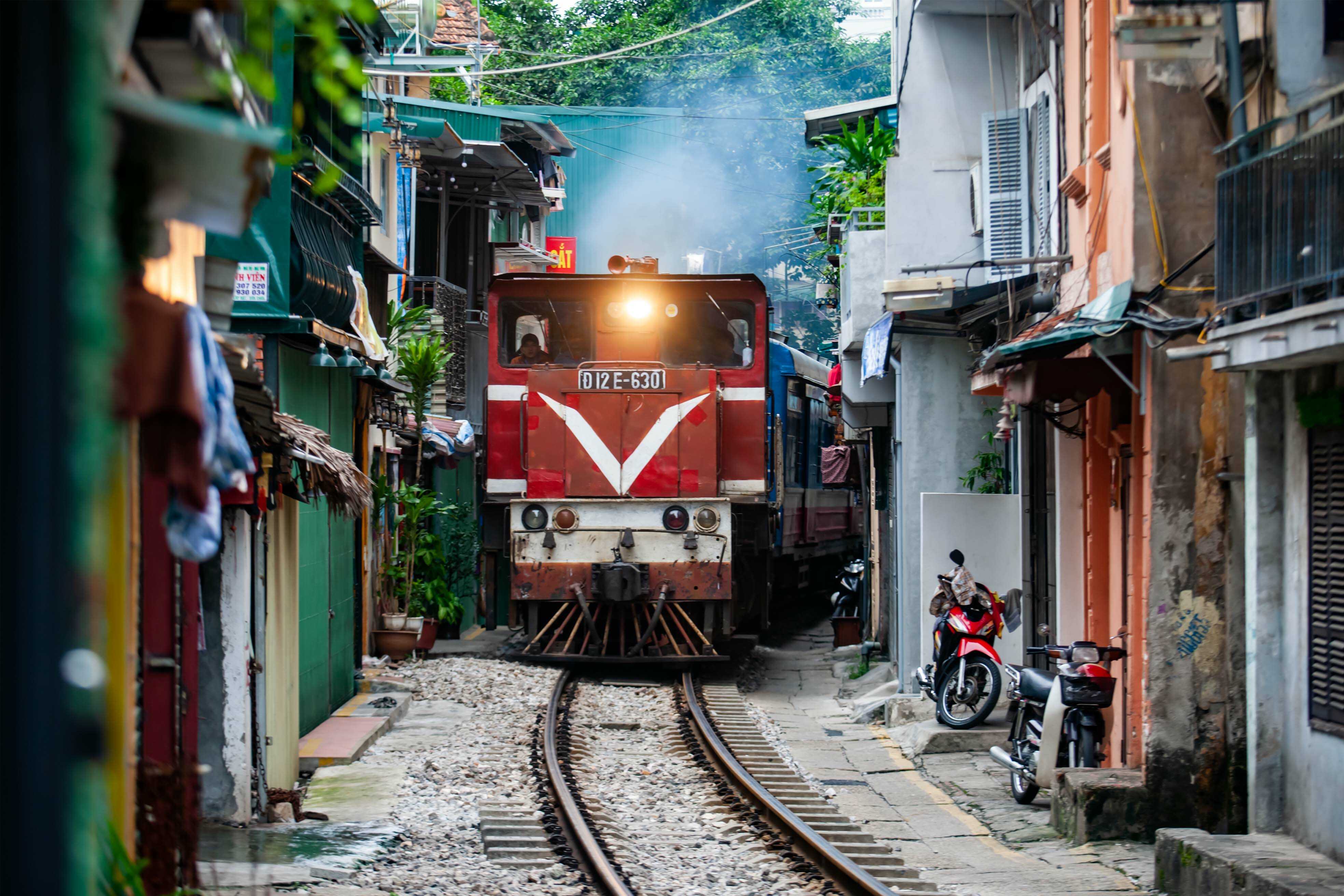National Museum of Vietnamese History: History, Architecture, Things To Do & Travel Guide
Located in the heart of Hanoi, the National Museum of Vietnamese History invites you on a journey through thousands of years of the country’s cultural richness and complex past. This museum is a window into the events, traditions, and transformations that have shaped Vietnam into what it is today.
Housed in a beautifully preserved colonial-era building, the museum offers far more than just a collection of artifacts. It serves as a vital window into the events, traditions, and transformations that have shaped the identity of the Vietnamese people.
In this article of GTrip, we’ll explore why this museum is a must-visit for anyone seeking a deeper understanding of Vietnamese heritage. A visit here promises a meaningful and memorable experience.
Where is the National Museum of Vietnamese History?
- Location 1: 1 Trang Tien Street, Cua Nam Ward (1 Trang Tien Street, Phan Chu Trinh Ward, Hoan Kiem District, Hanoi)
- Location 2: 216 Tran Quang Khai Street, Cua Nam Ward (216 Tran Quang Khai Street, Trang Tien Ward, Hoan Kiem District, Hanoi)
The National Museum of Vietnamese History spans two historically significant buildings near the iconic Hanoi Opera House. The first building, at 1 Trang Tien Street, was originally constructed as the Louis Finot Museum between 1926 and 1932 during French colonial rule. Designed by architect Ernest Hebrard, it features a distinctive blend of French colonial and traditional Vietnamese (Indochina) architectural elements, including double walls and balconies for natural ventilation. This building houses extensive collections covering Vietnam’s history from prehistoric times—dating back 300,000 to 400,000 years—through to the August 1945 Revolution, displaying over 200,000 artifacts arranged chronologically.
The second building, at 216 Tran Quang Khai Street, was originally built in 1917 as the Indochina Department of Trade headquarters. It was later repurposed in 1959 as the Museum of the Vietnamese Revolution, focusing on the country’s modern history from the mid-20th century to the present day, continuing the narrative from the 1945 Revolution onward. Together, these two sites offer a comprehensive journey through Vietnam’s rich cultural and revolutionary history, making the museum a vital institution for understanding the nation’s heritage.
Both buildings are centrally located near Hoan Kiem Lake and are easily accessible by various modes of transportation, including bus and taxi. The museum is also notable for being the first in Vietnam to incorporate 3D virtual interactive technology, allowing virtual visits to its extensive collections online.
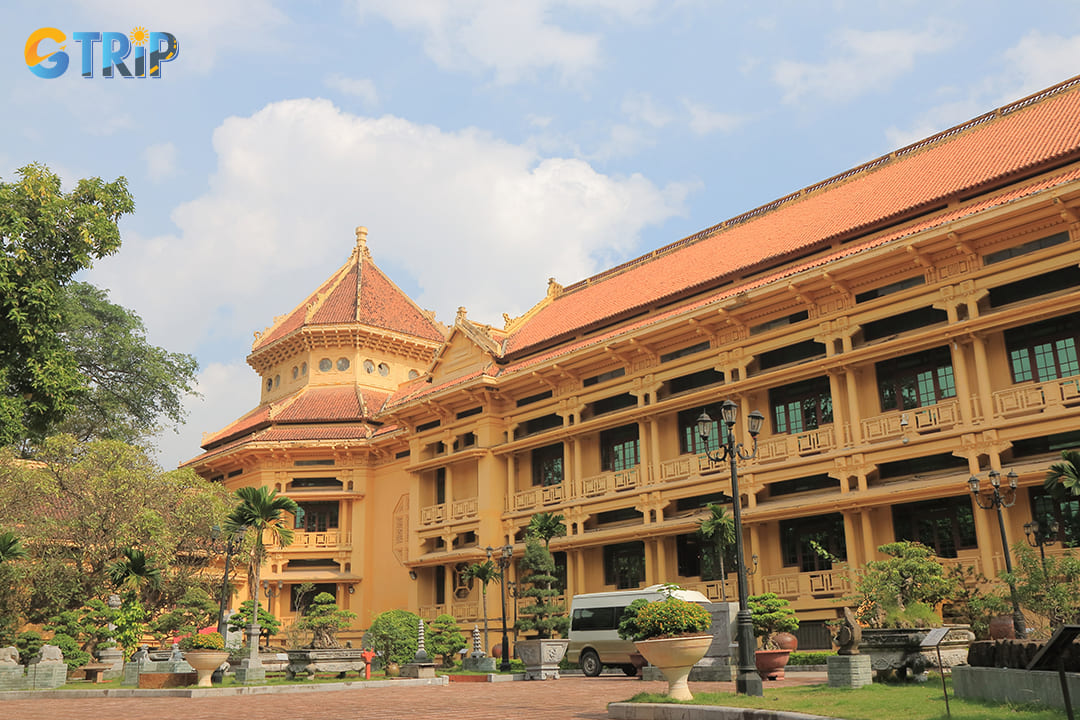
The National Museum of Vietnamese History is located in Hanoi’s Hoan Kiem District and spans two historically significant buildings
The history of the National Museum of Vietnamese History
The National Museum of Vietnamese History stands as a testament to Vietnam's rich cultural heritage, with roots dating back to the early 20th-century colonial period. The museum as we know it today was established in 2011 through the significant merger of two prominent institutions: The former National Museum of Vietnamese History and the National Museum of the Vietnamese Revolution. However, its origins as a public institution can be traced back to 1958, when it first opened its doors to tourists eager to explore Vietnam's historical narratives.
The museum's chronological approach takes you on a fascinating journey spanning approximately 300,000-400,000 years of Vietnamese civilization. The first building showcases prehistoric artifacts, ancient relics, and items from various Vietnamese dynasties up through the pivotal August 1945 Revolution. The second building then seamlessly continues this narrative, documenting Vietnam's revolutionary period and subsequent development into the nation it is today.
Throughout its evolution, the museum has maintained its commitment to preserving and presenting authentic Vietnamese history. This dual-site approach has enabled the institution to create more comprehensive exhibitions while honoring the architectural and historical significance of both original buildings. Today, it stands as one of Vietnam's premier cultural institutions, offering invaluable insights into the nation's historical development.
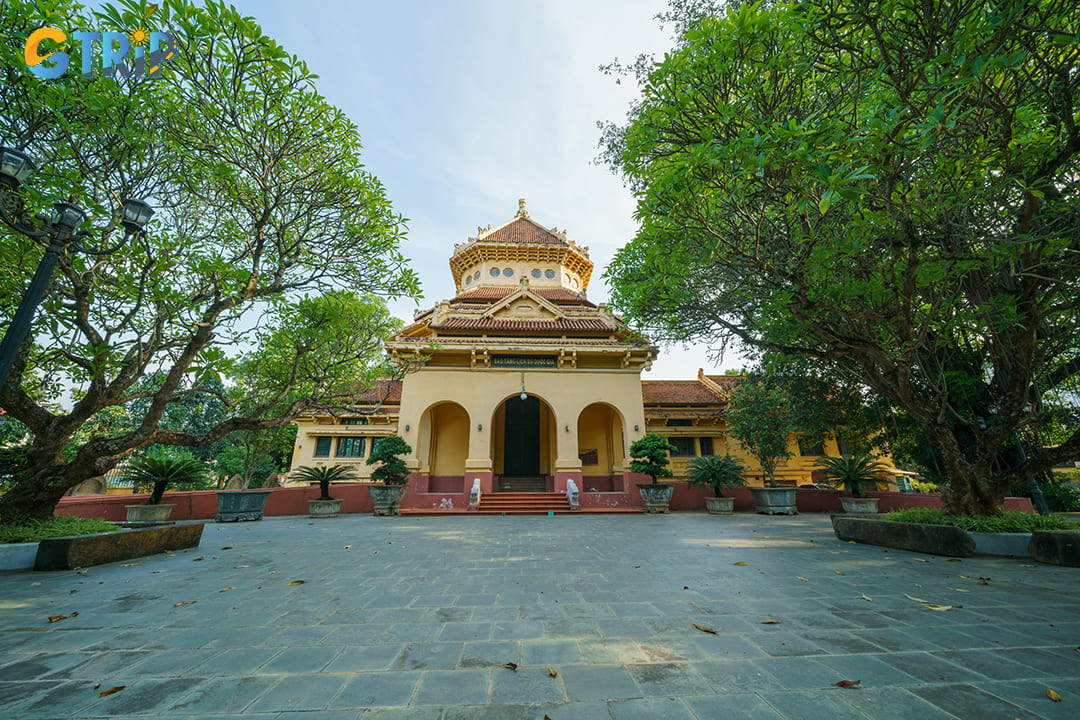
The National Museum of Vietnamese History stands as a testament to Vietnam's rich cultural heritage, with roots dating back to the early 20th-century colonial period
Architecture of the National Museum of Vietnamese History
The National Museum of Vietnamese History stands as an architectural masterpiece blending Eastern and Western influences. Its distinctive design provides an aesthetically pleasing backdrop for the treasures within and incorporates practical elements that respond to Hanoi's tropical climate.
Exterior of the National Museum of Vietnamese History
The museum's exterior immediately captures tourists' attention with its unique architectural style, designed by renowned French architect Ernest Hebrard between 1926 and 1932. The building stands as a magnificent example of Indochinese architecture, featuring a striking cupola-shaped edifice reminiscent of traditional Asian pagodas. This deliberate fusion of French colonial grandeur with Chinese architectural elements creates a visual statement about Vietnam's complex cultural history and influences.
Painted in a warm ochre yellow with contrasting green windows and rust-red roof tiles, the museum building creates a memorable visual impression against Hanoi's urban landscape. Located in central Hanoi near the Opera House, this color scheme was characteristic of many colonial-era government buildings, yet the pagoda-inspired elements give it a distinctly Asian identity. The symmetrical facade exudes both elegance and harmony, extending over 1,800 square meters with balanced proportions that draw the eye upward toward its iconic dome.
The architectural genius of Hebrard is evident in the building's climate-responsive design. Double walls create a thermal buffer zone, while strategically placed balconies and overhangs provide shade, protecting both tourists and precious artifacts from Vietnam's intense sunlight and heat. These thoughtful adaptations to the local climate demonstrate how the building functions as both a beautiful monument and a practical museum space, combining form and function in a seamless blend.
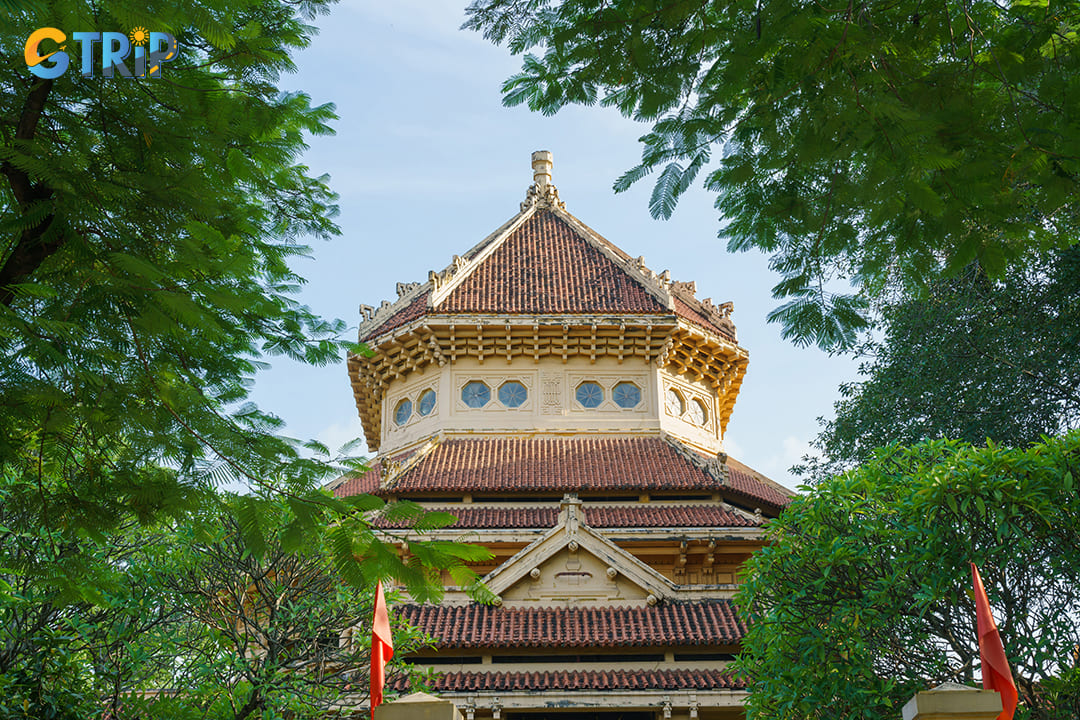
The museum's exterior immediately captures visitors' attention with its unique architectural style, designed by renowned French architect
Interior of the National Museum of Vietnamese History
Stepping inside the museum, you are immediately greeted by the impressive octagonal main lobby, which serves as the building's central architectural feature. This octagonal design draws inspiration from traditional Asian wooden structures and creates a sense of grandeur while establishing the building's cultural context. The lobby functions as both a welcoming space and an orientation point from which tourists begin their chronological journey through Vietnam's rich history.
The exhibition spaces flow outward from this central hub in an elongated rectangular pattern, with interconnected rooms arranged in historical sequence. This thoughtful layout covers over 2,200 square meters and guides you naturally through five major chronological sections, spanning from prehistoric times to the August 1945 Revolution. The spatial organization creates an intuitive narrative flow that enhances the educational experience, allowing you to absorb Vietnam's historical timeline in a logical progression.
The interior architecture demonstrates remarkable attention to climate control and artifact preservation. The triple-layered roof system above the lobby echoes designs from Vietnam's Keo Pagoda, while exhibition galleries feature double-layered roofs that regulate temperature and humidity. Natural light filters gently through architectural features, creating well-illuminated spaces that protect sensitive artifacts while providing comfortable viewing conditions. This balance between preservation needs and tourist comfort showcases the building's sophisticated design.
The museum's vertical organization also serves practical purposes. The ground floor, elevated 2.5 meters from street level, houses storage facilities and restoration workshops. The upper levels contain both permanent collections and temporary exhibition spaces. This arrangement maximizes the building's functionality while creating a hierarchy of spaces that reflects museological best practices of the era. The interior houses approximately 200,000 artifacts, with exhibition spaces designed to highlight the most significant pieces. They include the renowned collection of Champa stone sculptures and treasures from various Vietnamese dynasties.
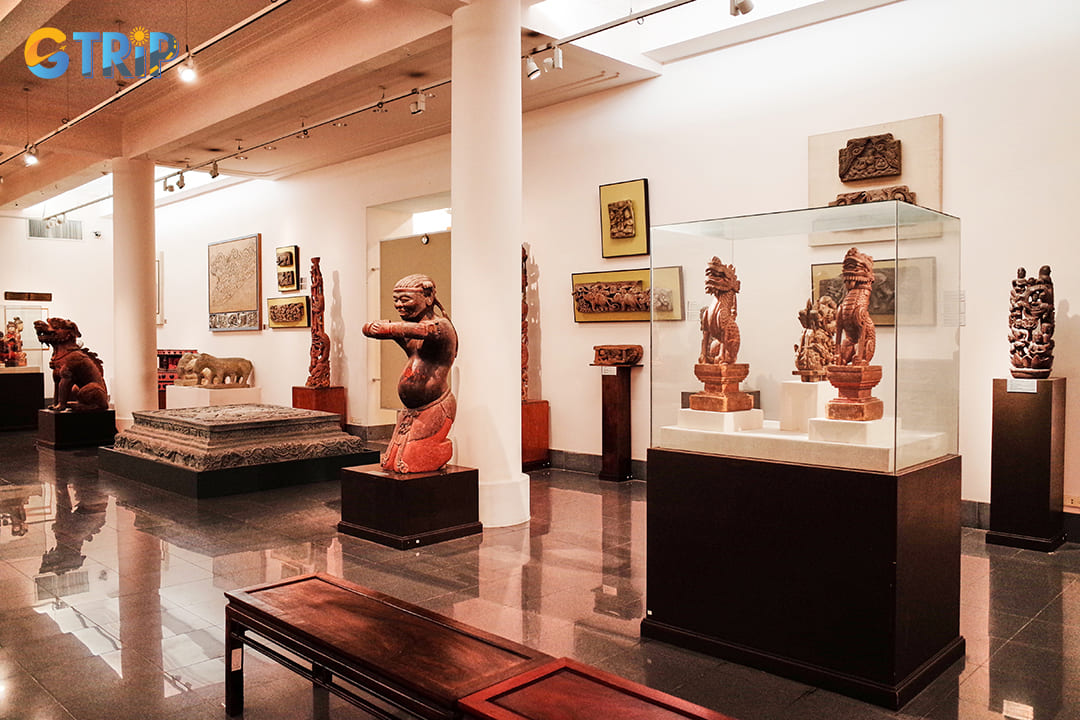
The exhibition spaces flow outward from this central hub in an elongated rectangular pattern, with interconnected rooms arranged in historical sequence
Exhibitions and key artefacts to explore
The National Museum of Vietnamese History houses a treasure trove of artifacts spanning thousands of years of Vietnamese civilization. The museum's collections are thoughtfully arranged in both chronological and thematic sequences. The museum provides an immersive educational experience through its diverse exhibition areas and specialized galleries.
Main historical exhibits
The backbone of the museum's collection is its chronological presentation of Vietnamese history, beginning with the nation's earliest inhabitants. The prehistoric Vietnam section showcases stone tools dating back 300,000-400,000 years from archaeological sites like Nui Do and An Khe. It also features impressive Dong Son bronze drums (dating from 700 BCE to 100 CE) adorned with intricate depictions of ancient Vietnamese life.
The early state formation to the Tran Dynasty exhibits guide you through Vietnam's formative periods, including:
- Van Lang-Au Lac period (7th-3rd centuries BCE) - featuring artifacts from the legendary Hung Kings era
- Chinese domination (111 BCE-938 CE) - displaying evidence of cultural resistance and assimilation
- Ngo, Dinh, Le, and Ly dynasties (939-1225) - showcasing Vietnam's golden age of independence
- Tran Dynasty (1225-1400) - highlighting military victories against Mongol invasions with weapons and memorial tablets
From the Ho Dynasty to the August 1945 Revolution, the exhibits document Vietnam's later feudal periods and colonial resistance. Key displays include:
- Ming occupation artifacts (1407-1427)
- The Le and Mac dynasty cultural objects
- Nguyen Dynasty imperial regalia and administrative seals
- Anti-colonial resistance documents and weapons
- Revolutionary propaganda from the August Revolution
The Champa stone sculpture collection represents one of the museum's most significant holdings, featuring exquisite sandstone sculptures dating from the 7th to 15th centuries. These masterpieces showcase the Hindu-influenced artistic traditions of the Champa civilization that once flourished in central Vietnam.
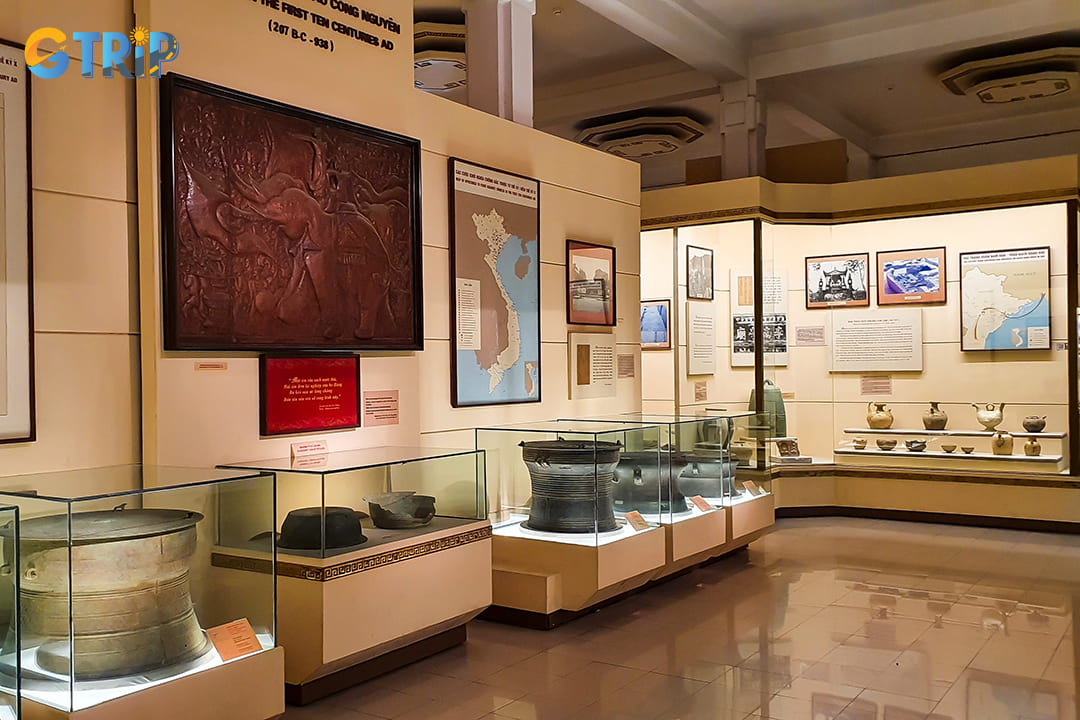
The backbone of the museum's collection is its chronological presentation of Vietnamese history, beginning with the nation's earliest inhabitants
Thematic and supplementary exhibits
Beyond the chronological displays, the museum features specialized thematic exhibitions that explore specific aspects of Vietnamese heritage. These galleries include:
| Thematic exhibition | Key features |
|---|---|
| Ethnic cultural heritage | Traditional costumes, tools, and ceremonial objects from Vietnam's 54 ethnic groups |
| Archaeological discoveries | Recent excavation findings with detailed contextual information |
| Pottery and ceramics | Evolution of Vietnamese ceramic traditions from prehistory through imperial periods |
| Currency and trade | Ancient coins, trade goods, and maritime commerce artifacts |
| Religious development | Buddhist, Confucian, Taoist, and folk religion artifacts spanning centuries |
These thematic exhibitions are frequently rotated, allowing the museum to showcase different aspects of its vast collection while keeping the experience fresh for returning tourists.
"Explore - Create" youth area
The museum's commitment to education is evident in its innovative 3,220 m² "Explore - Create" interactive zone designed specifically for younger tourists. This child-friendly space transforms traditional museum education through:
- Hands-on replicas of archaeological artifacts that children can touch and examine
- Interactive digital displays explaining historical events through animation
- Craft workshops where children can create traditional Vietnamese art forms
- Historical costume try-on stations representing different eras in Vietnamese history
- Simplified educational games teaching chronology and historical significance
These activities are specially designed to engage children's curiosity while building their understanding of Vietnamese heritage through multisensory experiences rather than passive observation.

The museum's commitment to education is evident in its innovative 3,220 m² "Explore - Create" interactive zone designed specifically for younger visitors
Outdoor exhibition area
The sprawling 30,000 m² outdoor exhibition space serves as a natural extension of the indoor galleries, housing larger artifacts and providing space for cultural performances. Notable features include:
- Monumental stone sculptures from various dynasties
- Traditional Vietnamese agricultural tools and machinery
- Ancient architectural elements from demolished historical buildings
- Recreated traditional house styles from different regions
- Ceremonial spaces for periodic cultural performances and holiday celebrations
The outdoor area follows landscaped pathways that guide you chronologically through Vietnam's architectural evolution, with information panels providing historical context for each display.
Hall of national figures
The 1,520 m² Hall of National Figures serves as a solemn tribute to key leaders in Vietnam's history. The exhibitions focus particularly on:
- Ancient kings and queens who shaped Vietnamese independence
- Military leaders who defended Vietnam against foreign invasions
- Intellectual and cultural figures who advanced Vietnamese arts and sciences
- Revolutionary heroes of the independence movements
- President Ho Chi Minh's life and legacy, with personal artifacts and historical documents
The hall employs a combination of original artifacts, historical photographs, and biographical information to create comprehensive portraits of these influential figures. Special attention is given to contextualizing their contributions within Vietnam's broader historical narrative.
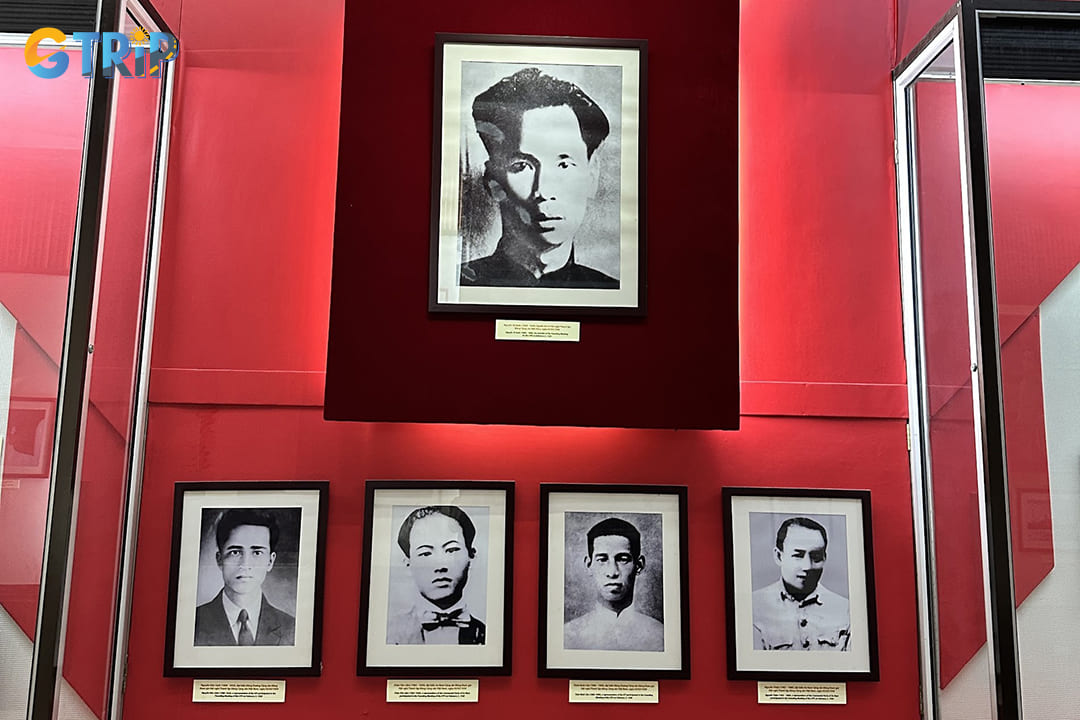
The 1,520 m² Hall of National Figures serves as a solemn tribute to key leaders in Vietnam's history
Supporting facilities
The museum's impressive infrastructure extends beyond exhibition spaces to include specialized facilities that support its educational mission:
- The grand octagonal hall (6,600 m²) serves as a ceremonial space for special exhibitions and cultural events
- State-of-the-art artifact storage facilities (16,870 m²) maintain precise climate control for preservation
- Conservation laboratories (3,350 m²) employ latest techniques for artifact restoration and preservation
- Conference and screening rooms (3,150 m²) host academic lectures, documentary screenings, and educational programs
- Administrative offices (15,500+ m²) house the museum's research, educational, and curatorial departments
These support facilities, though typically not accessible to regular visitors, play a crucial role in the museum's ongoing research and conservation efforts that continually enhance the exhibited collections.
Opening hours and ticket prices of the National Museum of Vietnamese History
The National Museum of Vietnamese History opens its doors from Tuesday through Sunday each week. The operating hours are split into two sessions: 8:00 AM to 12:00 PM in the morning and 1:30 PM to 5:00 PM in the afternoon. The museum remains closed every Monday for maintenance and preservation work. During significant Vietnamese holidays such as Tet (Lunar New Year), National Day (September 2nd), or Reunification Day (April 30th), special scheduling may apply. You should check the museum's official website or contact them directly before your visit.
Admission fees:
| Visitor category | Price in VND | Approximate USD |
|---|---|---|
| Adults | 40,000 VND | $1.60 |
| College/University Students* | 20,000 VND | $0.80 |
| Primary to High School Students | 10,000 VND | $0.40 |
| Children under 6 | Free | - |
| Persons with disabilities | Free | - |
| Elderly and severely disabled | 50% discount | Varies |
Note*: Student ID required
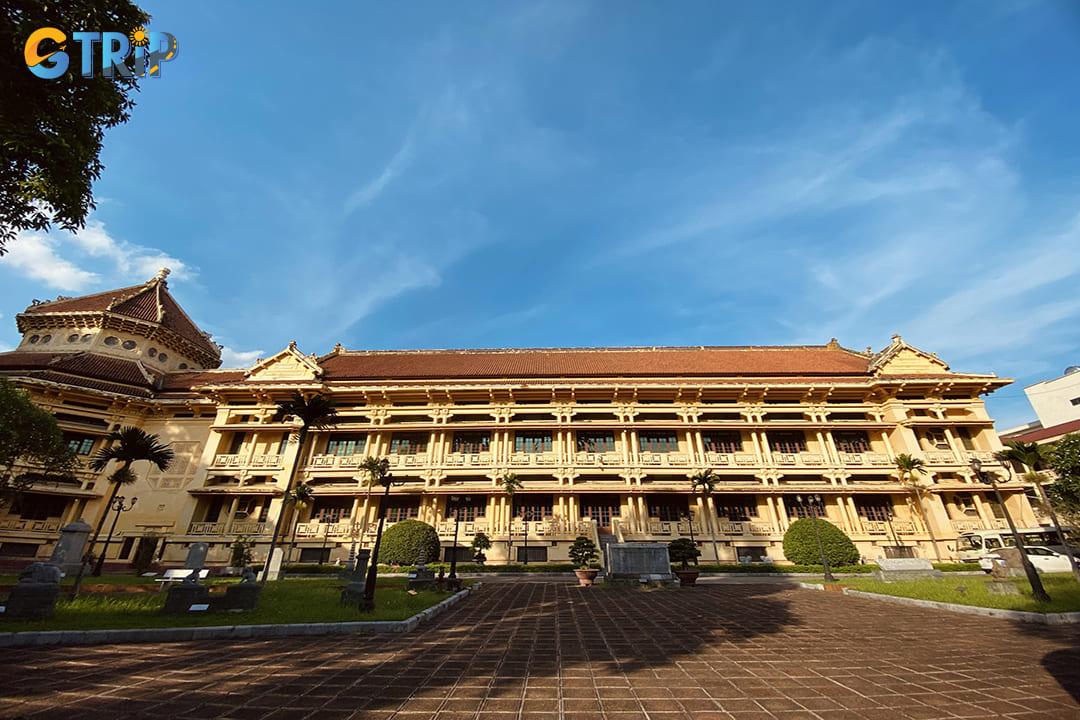
The National Museum of Vietnamese History opens its doors from Tuesday through Sunday each week
Best times to visit the National Museum of Vietnamese History
Timing your visit to the National Museum of Vietnamese History can significantly enhance your experience. The museum tends to be quietest during weekday mornings, especially between 8:00 AM and 10:00 AM just after opening. Early morning visits help you avoid crowds and provide the mental freshness needed to absorb the rich historical information displayed throughout the exhibitions.
For international tourists planning their Vietnam itinerary, consider the seasonal factors that affect comfort during your museum visit. The museum is fully air-conditioned, but your journey to and from the location will be more pleasant during specific times of year.
Best seasons to visit:
- Spring (March to April): Mild temperatures (20-25°C) and moderate humidity make exploring both the museum and the surrounding attractions comfortable
- Autumn (September to November): The most pleasant weather in Hanoi with clear skies, lower humidity, and temperatures around 25°C
- Winter (December to February): Fewer tourists overall, but it can be chilly (15-20°C) and occasionally foggy
If visiting during summer months, plan to arrive at the museum early in the morning before the day's heat peaks, or in the late afternoon around 3:00 PM when outdoor temperatures begin to cool.
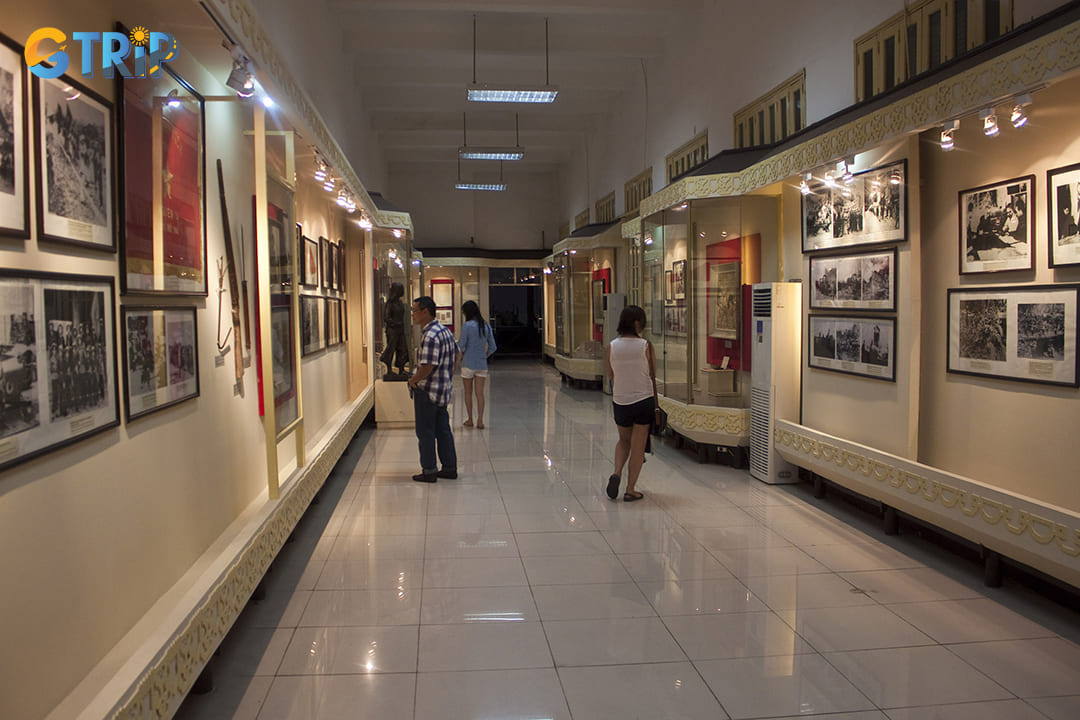
The museum tends to be quietest during weekday mornings
How to get to the National Museum of Vietnamese History?
The National Museum of Vietnamese History is conveniently located in Hanoi's historic district, comprising two separate buildings within walking distance of each other. This central location makes the museum accessible via multiple transportation options.
By bus
Hanoi's extensive public bus network offers an economical way to reach the museum while experiencing local transportation. Several routes service the area around the museum:
- Bus routes 02, 34, 44, 49, and 51: These regular city buses run throughout the day and connect various parts of Hanoi to the Opera House area.
- Electric bus E07: Part of Hanoi's newer, environmentally-friendly transportation initiative, this route offers a comfortable ride to the museum.
All buses stop at the Hanoi Opera House station, placing you within a 2-3 minute walk of the main museum building. Bus services typically operate from 5:30 AM until 9:00 PM, with buses arriving every 15-20 minutes during peak hours.
For budget-conscious travelers, bus fares range from 7,000 to 10,000 VND (approximately $0.30 to $0.43), making this the most economical option. While buses can get crowded during rush hours (7:00-9:00 AM and 5:00-7:00 PM), they offer an authentic glimpse into daily Hanoi life.
By car or motorbike
If you're renting a vehicle or have access to a private car or motorbike, reaching the museum is straightforward, though parking requires some planning:
- From Hoan Kiem Lake: Head east on Trang Tien Street for approximately 500 meters to reach the main building.
- From West Lake area: Travel south on Yen Phu Street, continue onto Tran Quang Khai Street, and you'll find the second building on your right before reaching Chuong Duong Bridge.
Parking options include:
- Limited street parking near the Opera House (hourly rates apply)
- Underground parking at Trang Tien Plaza (40,000 VND for the first hour, 10,000 VND for each additional hour)
- Numerous motorbike parking lots in the vicinity (10,000-15,000 VND for all-day parking)
Note that traffic in Hanoi's central district can be congested, especially during weekday peak hours, so allow extra travel time if driving yourself.
By taxi or ride-hailing services
For convenience and comfort, especially during hot summer months or rainy season, taxis and ride-hailing apps provide direct access to the museum entrance:
- Traditional taxis: Reputable companies include Mai Linh, G7, and Vinasun (white and green vehicles).
- Ride-hailing apps: Grab, Be, and Xanh SM are widely used in Hanoi, with English-language interfaces available.
| Journey | Approximate duration | Estimated cost |
|---|---|---|
| From Old Quarter | 5-10 minutes | 40,000-70,000 VND ($1.70-$3.00) |
| From West Lake | 15-20 minutes | 80,000-120,000 VND ($3.50-$5.20) |
| From Noi Bai Airport | 40-50 minutes | 400,000-500,000 VND ($18-$22) |
When using taxis, ensure the meter is running or agree on a price beforehand. With ride-hailing apps, your fare is calculated and displayed before confirming your booking, eliminating potential pricing disagreements.

If you're renting a vehicle or have access to a private car or motorbike, reaching the museum is straightforward
Important notes when visiting the Vietnam National Museum of History
To make the most of your trip, a bit of planning goes a long way. Here are some key tips:
- Dress comfortably: Wear breathable clothes and sturdy shoes, as you'll be walking through narrow, sometimes uneven paths between drying areas.
- Protect yourself from the sun: Bring sunscreen, a hat, and sunglasses—most incense-drying fields are open with little shade.
- Carry cash: Small vendors don’t accept cards. Bring enough Vietnamese dong for souvenirs, drinks, or small donations.
- Be respectful with photos: Always ask permission before photographing locals, especially in private spaces.
- Consider a local guide: A guide can enhance your visit with cultural insights and help you connect with artisans.
- Go on weekdays: Weekday visits are quieter and give you a more authentic glimpse into daily village life.
- Don’t disturb incense displays: The colorful sticks are valuable products, admire them, but don’t touch them without permission.
Nearby attractions to visit from the National Museum of Vietnamese History
After immersing yourself in Vietnam's rich history at the museum, several noteworthy attractions lie within walking distance, making it easy to build a comprehensive cultural itinerary. The museum's central location in Hanoi's French Quarter places it conveniently close to architectural landmarks, serene lakes, and other cultural institutions that complement your historical exploration.
Hanoi Opera House (240m)
Just a 3-minute stroll from the National Museum of Vietnamese History stands the magnificent Hanoi Opera House. It is a stunning example of French colonial architecture that has graced the city since 1911. This elegant cream and yellow structure showcases the distinctive Belle Epoque style with ornate detailing on its facade.
You can admire the building's grand exterior with its domed roof, intricate balconies, and decorative embellishments that reflect European architectural influences of the early 20th century. For those interested in the performing arts, checking the schedule for concerts, ballets, or Vietnamese traditional performances offers an excellent cultural addition to your museum visit.
Visitor information:
- Opening hours: Generally only open during performances
- Photography: Allowed of the exterior; limited inside
- Guided tours: Available on select days when no performances are scheduled
- Ticket prices: Vary depending on performance (100,000-2,000,000 VND)
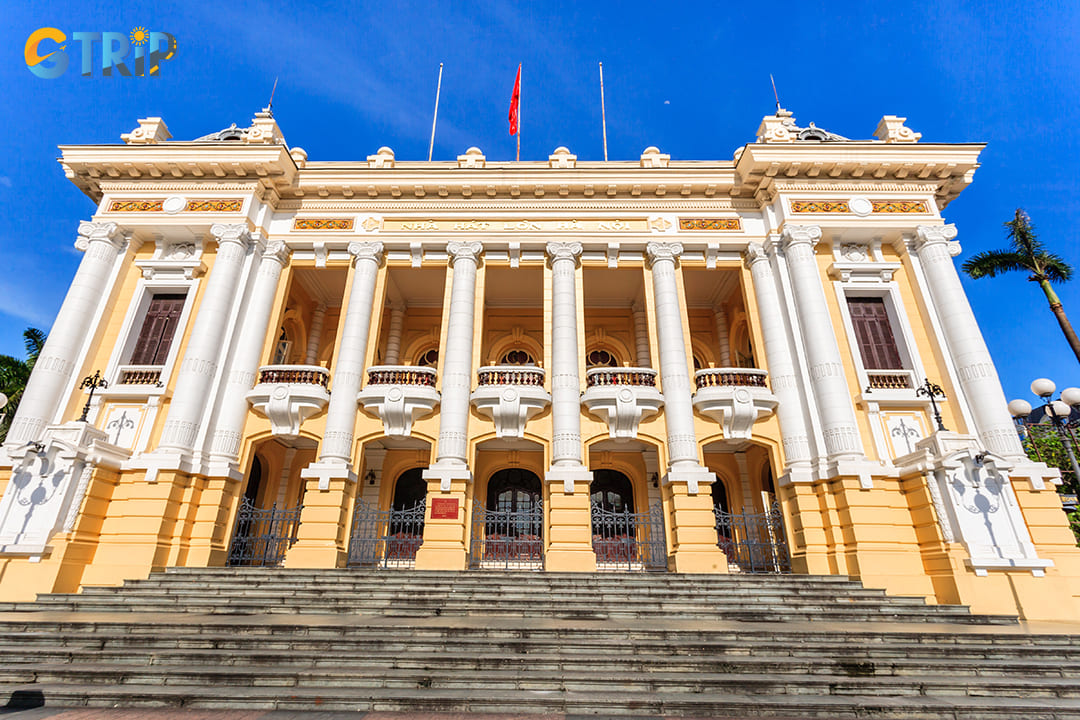
Just a 3-minute stroll from the National Museum of Vietnamese History stands the magnificent Hanoi Opera House
Geology Museum (170m)
The Geology Museum is practically next door to the National Museum of Vietnamese History, making it an ideal companion visit for science enthusiasts. This often-overlooked gem houses an extensive collection of minerals, rocks, and fossils that tell the geological story of Vietnam spanning millions of years.
The museum's displays include impressive specimens of gemstones found throughout the country, prehistoric fossils, and comprehensive exhibits on Vietnam's mining history. Of particular interest is the collection of fossilized wood specimens and the displays explaining Vietnam's diverse geological formations. The museum offers a fascinating scientific counterpoint to the cultural artifacts you'll have viewed at the National Museum.
Highlights of the collection:
- Rare mineral specimens from across Vietnam
- Prehistoric fossils dating back millions of years
- Interactive displays explaining geological processes
- Exhibits on Vietnam's natural resources and mining heritage
- Collection of meteorites and space rocks
Hoan Kiem Lake (1 km)
A pleasant 15-minute walk north from the museum brings you to Hoan Kiem Lake, the symbolic heart of Hanoi and a beloved gathering place for locals and tourists alike. This scenic lake, named "Lake of the Returned Sword", recalls the legend of Emperor Le Loi returning a magical sword to a golden turtle after defeating Chinese invaders.
The emerald waters create a tranquil oasis amid the bustling city, with the iconic red Huc Bridge leading to Ngoc Son Temple situated on a small island. The temple, dedicated to Confucian and Taoist philosophers and the 13th-century military leader Tran Hung Dao, provides another glimpse into Vietnamese cultural heritage.
Activities around the Lake:
- Cross the vibrant red Huc Bridge to visit Ngoc Son Temple
- Witness locals practicing tai chi in the early morning hours
- Enjoy street food from vendors around the lake's perimeter
- Visit Hoa Phong Tower at the lake's northern edge
- Take photographs of the famous Turtle Tower (Thap Rua) in the center of the lake
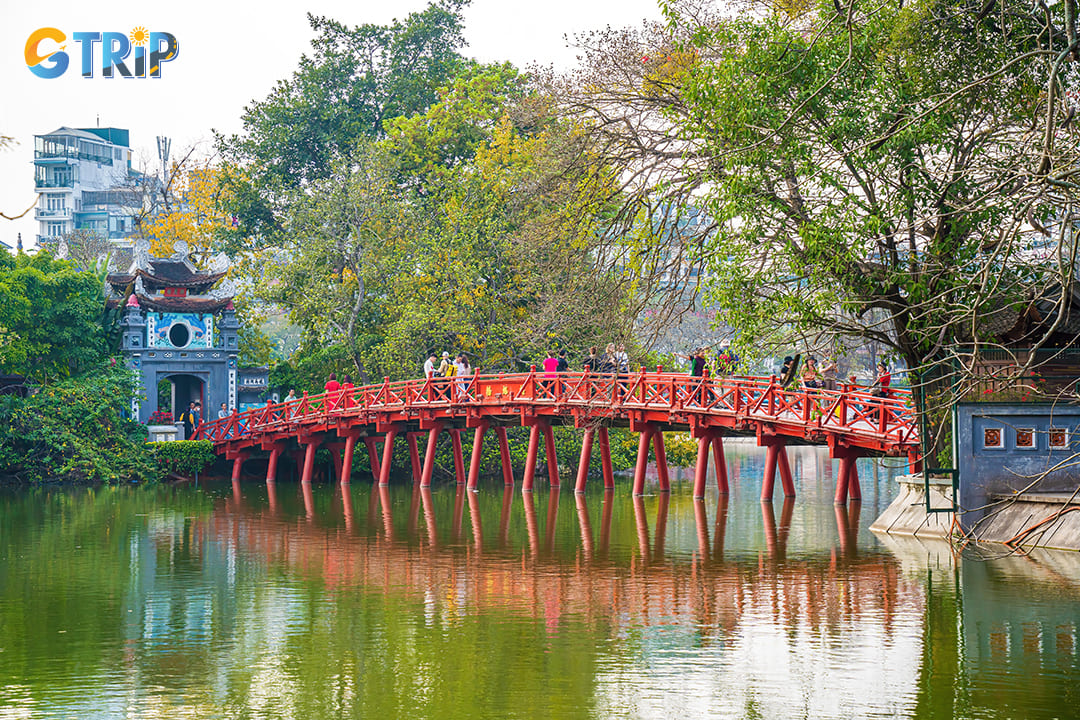
A pleasant 15-minute walk north from the museum brings you to Hoan Kiem Lake, the symbolic heart of Hanoi and a beloved gathering place for locals and tourists alike
Immersing yourself in the National Museum of Vietnamese History offers a rich tapestry of Vietnam's past and cultural evolution. This journey sparks curiosity and fosters a deeper connection with the nation's heritage, making it more than just an educational experience.
It's a gateway to understanding Vietnam on a profound level. As you wander through its halls filled with ancient artifacts and stories, you gain insights that stay with you long after you've left.
If you're planning your next adventure or simply dreaming about it, remember how intertwined history is with every new place we explore. And should questions linger or lead to further interests, GTrip - Vietnam Travel Agency is here to guide those curious footsteps whenever you're ready for the next exploration chapter. Consider booking our Hanoi tours to explore this museum and other attractions.

